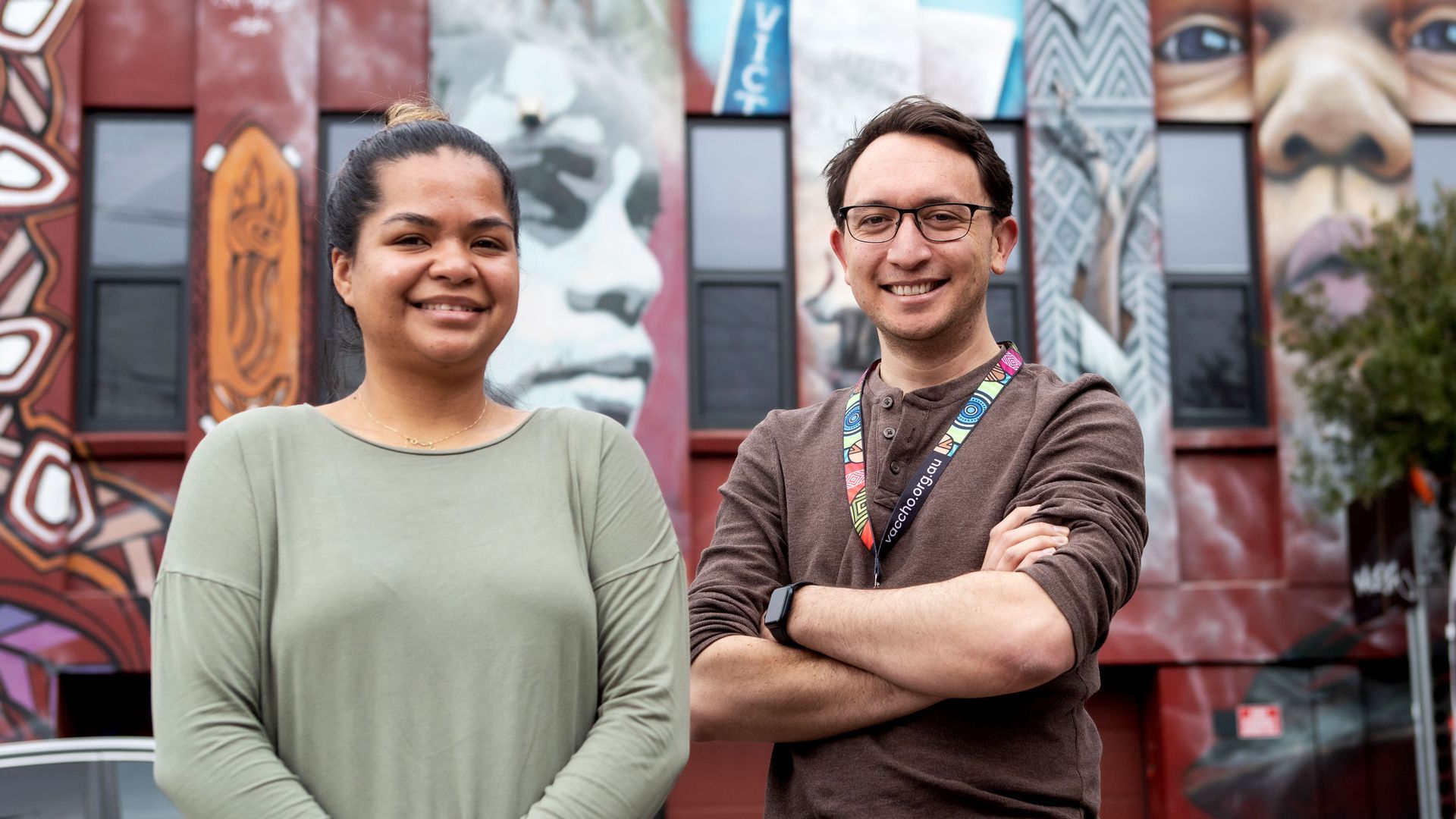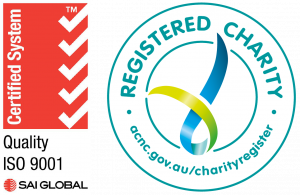Building heath care support for Aboriginal and Torres Strait Islander people
Pictured: Mahlia Peachey, Operational Lead at the Victorian Aboriginal Health Service in St Albans.
NWMPHN’s enhanced Integrated Team Care (ITC) program supports Aboriginal and Torres Strait Islander people who have complex chronic health conditions to better manage their health.
Add your title here
This is the text area for this paragraph. To change it, simply click and start typing. Once you've added your content, you can customize its design by using different colors, fonts, font sizes and bullets. Just highlight the words you want to design and choose from the various options in the text editing bar.
This is the text area for this paragraph. To change it, simply click and start typing. After adding your content, you can customize it.
The program connects patients with care coordinators and Aboriginal outreach workers to provide access to supplementary services and social supports.
It was initially commissioned from 2016 to 2022 with a focus on managing chronic conditions. In 2022–23, however, NWMPHN started to complement the program with additional psychosocial funding. This has enabled providers to deliver a more holistic health care approach that supports not only a client’s chronic conditions but also their social and emotional wellbeing.
“ … there is always someone you can speak to … ”

Pictured: Victorian Aboriginal Community Controlled Health Organisation staff Jessica Mitchell (left) and Abe Ropitini (right). Image credit: Leigh Henningham.
“The best part [of the ITC program] is knowing that when I have a problem or need help with my health, there is always someone you can speak to, to help and support me with all my health issues,” said one ITC client, who attends IPC Health.
“I never feel lonely when I know I have the lovely girls to talk to.”
As well as contributing to better management of chronic conditions, the program works to improve access to appropriate health care, and foster collaboration with the Aboriginal health sector.
It also supports primary care providers to deliver services in culturally appropriate and safe ways, including ways to boost the uptake of Aboriginal and Torres Strait Islander specific Medicare Benefits Schedule (MBS) items.
The program is a great example of how NWMPHN works with the broader Aboriginal and Torres Strait Islander health sector to bolster health equity for the community.
The organisation works closely, for instance, with the Victorian Aboriginal Health Service (VAHS). It was delighted to support VAHS to bring about the opening of the service’s newest clinic, in St Albans – a fitting way in which to mark the fiftieth anniversary of the service’s founding.
“Setting up the western metropolitan satellite clinic had been a strategic goal of VAHS for many years,” said Mahlia Peachey, Wailwan-Wiradjuri woman and operational lead at the clinic.
“The organisation had hoped to establish ourselves within the western region, where we knew there was a demonstrated need and community endorsement.
“Once we had successfully secured funding for the project, it did take over 2 years for it to be complete and for us to be able to open the doors to community.
“It was a tedious and long project, and we were faced with many setbacks that became evident during the COVID-19 pandemic. But we pushed through the many delays and were so pleased once we could finally deliver services to the community.”
Delivering any health care program, however, depends on a having a workforce that is skilled and motivated. To this end, NWMPHN funded every ITC provider to send an Aboriginal or Torres Strait Islander staff member to the Lowitja Institute’s third International Health and Wellbeing Conference, held in June 2023 in Cairns, Queensland.
“ … we were faced with many setbacks …”
Aboriginal and Torres Strait Islander people living across the region.
The NWMPHN region encompasses the Traditional Lands of the Wathaurong, Wurundjeri Woi-Wurrung and Boon Wurrung peoples, and has an estimated
This decision reflected the spirit of a much larger body of work, partnering with the Victorian Aboriginal Community Controlled Health Organisation (VACCHO) to create a workforce development tool to build capability across the region.
The tool is specifically designed for organisations operating in Melbourne’s north and west, and builds on VACCHO’s 2022
Victorian Aboriginal Health and Wellbeing Workforce Strategy.
VACCHO’s executive director of population health, Abe Ropitini, said the tool will help drive better outcomes and improved health equity for Aboriginal people in Victoria.
“Although we have an Aboriginal community-controlled sector, with a workforce that we need to further grow and enhance the capability of, we also have a health system which has a key responsibility to produce equitable outcomes in closing the gap more holistically,” he said.
“It's critical that everybody involved in both these levels of the health system know what their roles, responsibilities and capabilities need to be in respect to working with Aboriginal people.”
Jessica Mitchell, VACCHO’s executive manager of workforce development, said that leaders in mainstream organisations have a key role to play in enabling more holistic care.
“We know that there's a strong connection between strong culture and identity and great health outcomes,” she said.
“By leaders doing all the things contained within this kit, it enables Mob to feel empowered in health care settings, and able to make their own decisions towards their health in the future.”
Keep up to date with the latest news and publications, funding opportunities, careers and upcoming events at NWMPHN.

